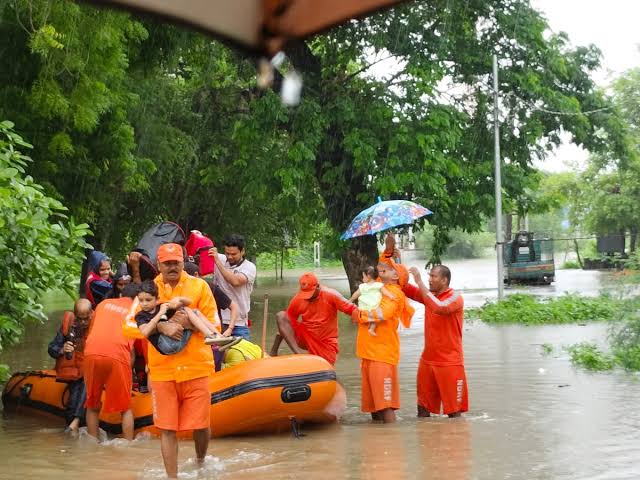Chief Minister Bhupendra Patel held a high-level meeting in the state capital to assess the situation caused by heavy rains in Gujarat. The Chief Minister arrived at the State Emergency Operation Center on Monday afternoon and conducted a video conference with the collectors, municipal commissioners, and district officials of the rain-affected areas to gather pertinent details.
Emphasizing the safe evacuation of people from low-lying areas, the Chief Minister instructed District Collectors and Municipal Commissioners that the first priority should be to avoid loss of life and livestock. He emphasized that special vigilance must be taken to prevent anyone from crossing or entering river channels or roads when rainwater is flowing dangerously. If necessary, the police should strictly enforce this directive.
The Chief Minister was also briefed on the evacuation operations aimed at rescuing people.
So far, 17,827 people have been evacuated, and 1,653 people have been rescued in the state. Thirteen teams from the NDRF and 22 teams from the SDRF have been deployed in the affected districts to assist in rescue and relief operations.
Out of 206 reservoirs in the state, 59 are 100% full, 72 are on high alert, 22 are on alert, 9 are under flood warning, and 7 rivers have overflowed. The Sardar Sarovar Dam is at 88.74% of its total storage capacity, i.e. 2,96,459 MCFT of water.
Out of the 7,009 villages affected by power supply disruptions, electricity has been restored in 6,977 villages. Of the 6,090 damaged power poles, 5,961 have been repaired.
In the last 24 hours, it has rained in 244 talukas across 33 districts in the state, with an average of 63.36 mm of rainfall recorded. The highest rainfall during this period was 356 mm in Khergam, Navsari district. On Monday, August 26, Morwa Hadaf in Panchmahal received the highest rainfall of 157 mm from 6 am to 12 pm. This season’s average rainfall in Gujarat has reached 91.88 percent.
The Chief Minister also instructed the implementation of preventive measures to avoid epidemics immediately after the rain stops, including cleaning operations to remove pesticide spillage, soil, sediment, and obstructions from roads to ensure they are suitable for vehicular traffic.
Currently, a total of 523 roads are closed in the districts of Surat, Navsari, Valsad, Tapi, Dang, and Chhota Udepur. The Chief Minister directed the Collectors in these districts to remain vigilant due to the possibility of further heavy rain.
During the conference, the Chief Minister interacted with the Collectors from the most affected districts, including Navsari, Valsad, Dang, Panchmahal, Vadodara, and Chhota Udepur, as well as the Municipal Commissioner of Vadodara, to review the water levels in rivers, traffic regulations, and the evacuation of people from low-lying areas in their jurisdictions. He has directed all District Collectors and administrations across the state to adopt a zero-casualty approach with full preparedness.



